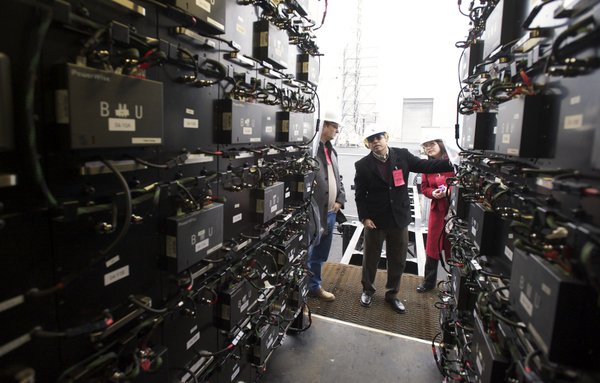forum
library
tutorial
contact

Washington State Awards Money
for Two Public Utility Microgrids
by Elisa WoodMicroGrid Knowledge, August 18, 2016
|
the film forum library tutorial contact |

|
Washington State Awards Money
by Elisa Wood |
The state has yet to determine how much of the $12.6M will go to the utility microgrids.
 Another state, this time Washington, is rolling out money for microgrids as part of a larger clean energy effort.
Another state, this time Washington, is rolling out money for microgrids as part of a larger clean energy effort.
Gov. Jay Inslee yesterday announced that five clean energy projects will share $12.6 million in state grants.
Two utility microgrids are among the five energy projects. One microgrid will be developed by Seattle City Light and the other by the Snohomish Public Utility District. Both are public power utilities.
The additional winners are not microgrids, but are a community solar project, a battery and solar competency training facility, and a shared energy economy demonstration.
Exactly how much money each project will receive, along with other details, are still being worked out in negotiations between state officials and utilities.
The state expects to finalize the terms in September, according to Peter Tassoni, state energy office program specialist.
Washington joins several other states that are kick-starting microgrids with incentive dollars, among them California, Connecticut, Massachusetts, New Jersey and New York.
Inside the utility microgrids
On its in-house blog, Seattle City Light said it plans to create a $3.5 million grid-connected microgrid that will include a utility-scale battery system, solar panels and emergency generators. The grant will pay for only part of the project, according to the utility.
Seattle City Light has yet to specify a location for the microgrid, but plans to find a site that can serve vulnerable community members when the central grid is down. The microgrid will ‘island' or separate from the grid during a power outage, and use its own generation and storage to serve the emergency center.
When not in island mode, the Seattle microgrid will provide some of the building's power. The utility also will leverage the microgrid to reduce energy costs. It will avoid purchases from the grid during periods when power prices are high and instead rely on the microgrid's resources.
Meanwhile, Snohomish County plans to construct what it is calling the Arlington Microgrid and Clean Energy Technology Center.
The project will show how various microgrid technologies can work together, among them energy storage, small-scale renewable energy and vehicle-to-grid. The aim is to improve grid resiliency, disaster recovery and renewable energy integration.
In addition to the utility microgrid, Snohomish County will build a visitor center to educate students, teachers and the community about emerging energy technologies. Snohomish County will partner with both the public and private sectors, as well as academia, on the center.
"This vital support from the state allows us to better demonstrate how microgrids are the logical next step in integrating renewable energy and energy storage into the electrical grid, while driving ever increasing levels of resiliency and reliability," said Craig Collar, CEO and general manager. "It's another example of how Washington has emerged as a leader in these important areas."
Snohomish County expects to design and build the microgrid in the 2017-2019 timeframe.
Gov. Inslee, a Democrat, made the announcement in Seattle at the Northwest Regional Clean Energy Innovation Partnership Workshop, hosted by the University of Washington and the Pacific Northwest National Lab. U.S. Energy Secretary Ernest Moniz and U.S. Sen. Maria Cantwell (D-WA) joined Inslee. Moniz praised Washington state for championing clean energy innovation. "Driving innovation is at the core of how our country maintains its leadership in developing clean, low-carbon energy technologies," he said.
The three non-microgrid awards went to:
learn more on topics covered in the film
see the video
read the script
learn the songs
discussion forum
